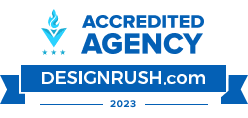CRM Success: Different Directions in Data Quality

There may be no CRM project quite as challenging as data migration and deduplication. If approached without a strategy and plan, this type of data cleanup can seem like a daunting and endless task that generates frustration and drains firm resources.
In reality, data quality isn’t a task or an initiative – it’s on ongoing project that must be approached strategically in order to achieve CRM success. Having good data quality is essential to encourage user buy-in and adoption, especially among attorneys who can be inherently a bit skeptical.
Dedicated data quality resources must be planned and budgeted for in advance. Due to the significant challenges presented in bringing together thousands of contacts from multiple users, the process must begin long before the CRM system is rolled out. And because new users and new contacts are constantly being added to the system, data maintenance will continue long after the CRM rollout is complete. Understanding these realities in advance and setting realistic expectations about data quality are crucial to a successful rollout.
Three law firms each dealt with these types of data quality challenges during their recent CRM rollouts. Each approached their data migration and quality projects from different directions. While their results and methods differed, each provides an excellent learning experience to guide other firms that may be struggling with data quality or maintenance issues. The firms included:
- Ulmer & Berne LLP, a firm with 185 attorneys and 4 offices headquartered in Cleveland
- Baird Holm LLP a firm with 75 attorneys and 1 office in Omaha
- Clark Hill, a firm with 180 attorneys and 5 offices headquartered in Detroit
The leaders of the data quality projects shared their experiences, best practices and lessons learned.
AN ELABORATE PROCESS
The most elaborate and technical process was employed by Baird Holm, a firm that utilized multiple types of software as well as manual processes to clean and deduplicate the data. Before embarking on the data cleaning project, Robert Barker, the firm’s IT Director, spent months looking for the right tools for the job. The final process required the purchase of multiple pieces of software and customization of other applications the firm already owned.
The first step in the process involved exporting the contact data from ContactEase, the firm’s CRM system, and importing into matchIT, a program from a company called helpIT systems. The application standardizes, normalizes and enhances data. The full version of the software retails for $12,000 for an annual license for a single work station. Each additional year costs $4500.
An initial pass through this system fixes contact addresses by comparing them against a US Postal Service database. So if some users have entered an address as “St.” and others entered it as “Street,” the software will make all versions the same. This is important because even slight variations in addresses can create duplicate contact records.
Because end users at Baird Holm did not do any data cleaning up front before their contacts were put through the system, standardization was essential. Additionally, because the firm also had no consistent style guide for addresses, there was a significant possibility of creating thousands of duplicates.
Next the firm created an Access database to manipulate the results from the system and customized another application to create a red-line report of the data changes. The report was then presented to the attorneys for a manual review of the changes. Following end user approval of the changes, a second process was run using a $50 application called Outlook Contacts Scrubber, which combined the duplicate records. This was important because the firm was also bringing in contacts from their billing system, which could create even more duplicates. As a result of the cleanup efforts, the firm went from 100,000 contacts to 80,000. During the entire process, the firm maintained a backup copy of the original database which could be reverted to if there were any issues with the data conversion.
Danielle Dubuc-Pedersen, the firm’s Marketing Director said that this data quality process was essential to the firm’s marketing and business development efforts. The firm believes in staying top-of-mind with Clients, prospective Clients, referral sources and alumni through highly targeted mailings, which require good contact information. Because postal mailing is highly automated, if the addresses are standardized according to postal standards, the firm can ensure accurate delivery and make use of postal discounts for large mailings. Additionally, the firm believes in measuring the results of e-mail– and as bounce rates go up, effectiveness goes down. Ultimately the goal is to segment clients by industry and classify them to more effectively meet their needs and enhance Client service.
While this method worked for the firm, it was not without challenges. Because the software didn’t integrate with the CRM system, it was definitely not a simplified approach. In fact, Robert said the process has a steep learning curve for new users. The process has also been slow. They began the data cleaning in February and it is still constant and ongoing – and the CRM system hasn’t even been rolled out to the attorneys yet. According to Danielle, it is essential to educate the attorneys and other end users that data cleanup will always be ongoing, because data quality is crucial for attorney trust of the system.
The data change review process also presented challenges. The reports were not particularly user- friendly and the attorneys were resistant to manually reviewing them. Ultimately, it took a mandate from the Managing Partner to get the attorneys to review them. Robert said this presents a lesson for anyone dealing with a data quality project – having the buy-in of firm management is imperative.
THE BIG BANG
Sam Shipley, the CIO at Ulmer & Berne said that rather than subject their attorneys to a year or more of periodic, ongoing data changes, they chose what they called a “big bang” approach to data cleansing utilizing the Berkeley Datalyser™, an outsourced method for cleaning and deduplicating contacts from the firm’s 400 users all at once. All of the users’ contact data was exported at once and put through a process where it was deduplicated using a series of rules. Reports were then generated and the changes were manually reviewed. Adjustments could then be made, and the rules could be revised and modified to meet the firm’s specific data change requirements.
The entire data quality process at Ulmer took about 12 weeks from start to finish and reduced the firm’s more than 200,000 contacts to around 113,000, almost a 44% reduction. As a result of the data project, the firm has achieved several benefits. Most importantly, they are now able to more efficiently and effectively execute their mailings, which is no small task. In addition, the project heightened end user awareness about contacts and allowed them to discover new relationships.
The cost for Datalyser process is based on the size of firm. For firms with less than 100 CRM licenses or seats, the price is $7500 plus $100 per CRM seat. For firms with more than 100 licenses or seats, the price is $15,000 plus $25 per CRM seat. While this amount may seem significant, it should be compared to the cost of manual data cleaning. For instance, a firm with over 100 users may have 50,000 contacts or more. If you consider that a competent data steward can usually resolve 30 to 40 contacts per hour accurately, a data cleaning project of this magnitude could take more than 1500 hours – or over 8 months. And assuming a rate of $20 per hour, the manual cleanup could cost $30,000 or more.
While the resulting reduction in the firm’s contacts was significant and timely, Ulmer did learn several lessons along the way. The most important was to take the time up front to communicate with end users about how they are currently utilizing their contact data. The firm learned this lesson the hard way. Because they weren’t aware of all the Datalyser rules up front, and because they didn’t take the time to ask end users about how they were utilizing their contacts, there were quite a few bad merges. Additionally, once all the data was merged, they found that some end users contacts changed or disappeared. For instance, several users had a major airline as a contact record. The record included not only the company’s name and contact information, but also the individual attorney’s sky miles number and pin. Initially all of these contact records were merged into one record and linked back to the individual attorneys – but without all of the additional individual information. As a result, the firm has had to spend a significant amount of time and resources manually validating the data changes.
In addition, because they didn’t have a firm-wide consistent style sheet and because contacts weren’t reviewed or cleaned by the attorneys or secretaries before going through the Datalyser, the project was more complex than expected. Without consistent style for contact records, a significant number of duplicates will often be created when the CRM is rolled out. They also discovered that all kinds of irrelevant, and even private, data was being stored in contact records, including credit card numbers, passwords and pin numbers. As a result, the firm had to create a secure custom application to house this type of private data.
Sam also cautioned that firms need to be aware of the implications of failing to properly prepare for any data quality project. Garbage in frequently equals garbage out, he cautioned. Additionally, you really need to understand going in how big a project it will be – and have both patience and a strategy. He says the bottom line is that while you may sell the project based on the benefits to the end users, ultimately if you mess up the attorneys’ contact data, the CRM project may be over before it starts.
He also said to take your firm’s culture into consideration before choosing a data cleaning methodology. At some firms, they will baulk at the thought of spending attorney or secretary time to clean the contacts before the rollout. At other firms, they may be more willing to do a manual and methodical rollout to avoid paying thousands of dollars up front for data cleaning.
ARMS AND LEGS
A firm that opted to go with a more manual and methodical process was Clark Hill. Jim Henderson, the Manager of Client Services, said the firm chose an “arms and legs” approach rather than investing additional money into the rollout. The firm began the rollout with 65,000 contact records in July and was able to finish the rollout and subsequent data cleaning process within 10 months by utilizing the firm’s current staff members.
The data quality project was implemented without acquiring additional resources, purchasing technology or even hiring data stewards. Instead Jim worked with the firm’s HR department to build a data cleaning and maintenance team composed of a total of ten secretaries and receptionists from each of the offices. As the firm rolled out the CRM system by practice groups and offices, on Fridays, team members would get together to work on data cleanup during lunch-and-learns, which are ongoing today. The total cost of the data cleaning project was the hours spent on the project by his internal team – along with quite a few pizzas and sandwiches.
Jim noted that having a partnership with your CRM vendor is crucial to the success of your data quality project and rollout. Because they have seen so many of these projects, their advice can save time and prevent headaches. He said he worked closely with the firm’s CRM vendor, Cole Valley Software, to create a solid rollout plan.
Jim said that executive management buy-in was also essential to the project. As the rollout progressed successfully, the CEO promoted it in the monthly newsletter to the entire firm. To eliminate concerns from attorneys, he said it can also be helpful to bring on executive users and senior lawyers with lots of contacts early. One of the first lawyers Jim brought onto the system was a senior partner who had been with the firm for over 30 years and had over 5000 contacts. Jim worked together with the attorney and showed him how to clean up his contact list in a customized Outlook list view. It took the attorney only about 10 minutes to get through the ‘A’s and within a few days he got through his entire contact list. Now if any of the newer partners raise concerns about how difficult it will be to have to go through their contacts, Jim mentions how easily some senor partners accomplished the task.
Jim also emphasizes focusing on planning and communication. He spent 60 days in advance of the rollout going on a ‘roadshow’ to each of the offices to build momentum and consensus for the project. He talked to the attorneys and staff about the reason for the selection of the system and the benefits for them and the firm. He assured them that a lot of work would not be required of the attorneys and taught the secretaries to spend some time up front cleaning up and enhancing contact records and marking personal records private to ensure that personal information didn’t flow into the system. He also used a vendor-supplied style guide for the secretaries to ensure consistent contact entry and minimize duplicates going forward.
One of the things Jim learned during the process was patience. Obviously doing a manual rollout can extend the process, and keeping the momentum going can be challenging. Plus the process never really ends. Each time a new attorney joins the firm and adds their contacts to the system, chances are that duplicates will be created. But one of the primary benefits of creating a data maintenance team is that the firm now has a process in place for ongoing data cleanup because they realize that data cleanup is not just a one-time initiative. Data cleansing and, in the bigger picture, CRM, are ongoing, evolutionary processes that require dedication and diligence.
Perhaps the biggest lesson to be learned from all three approaches is that there is no easy solution for data quality. However, it is absolutely essential to CRM success. If your firm is willing to commit the time and resources, understand and evaluate the options and plan your strategy, success is achievable.







